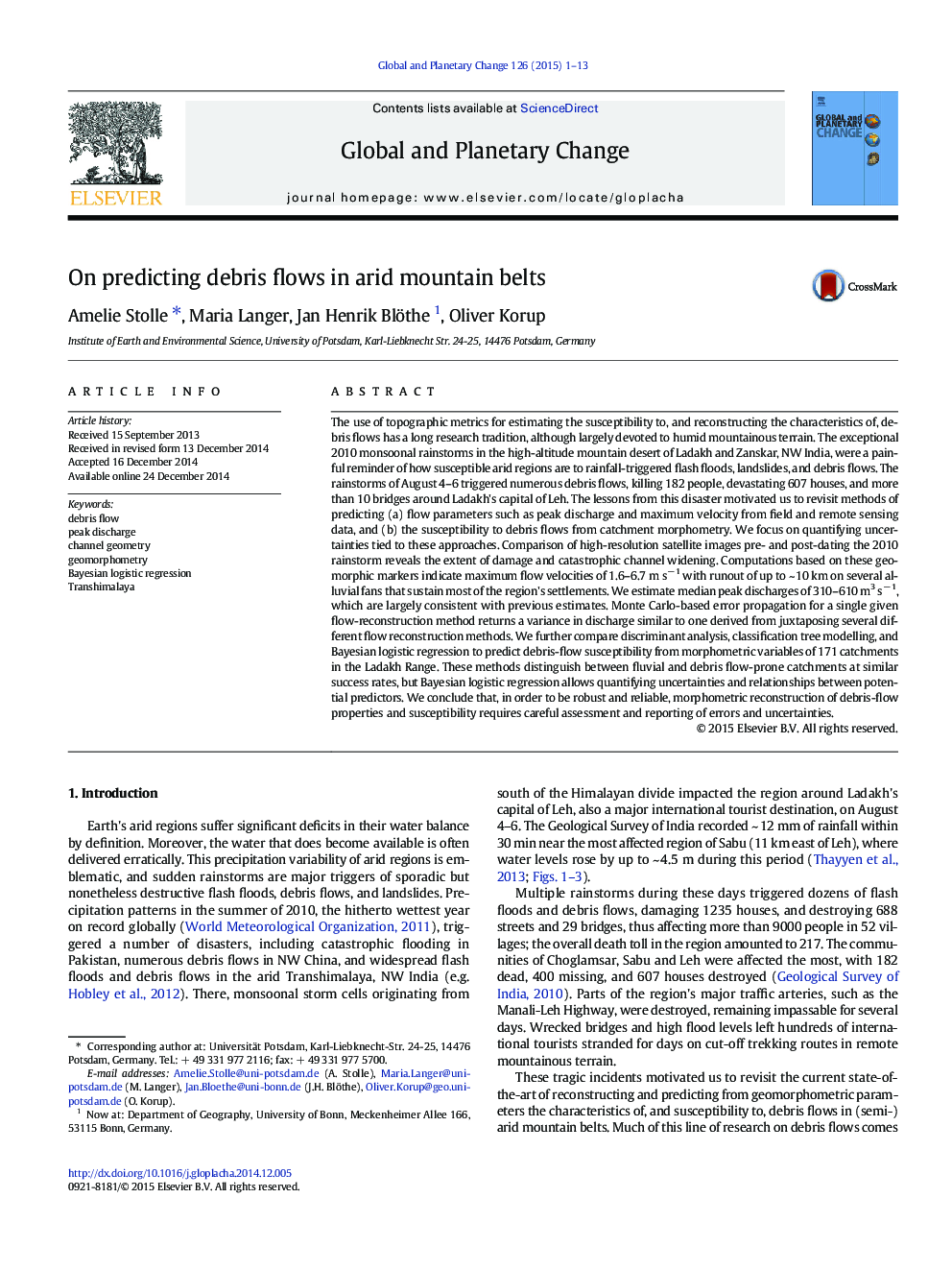| کد مقاله | کد نشریه | سال انتشار | مقاله انگلیسی | نسخه تمام متن |
|---|---|---|---|---|
| 4463376 | 1621656 | 2015 | 13 صفحه PDF | دانلود رایگان |
• We revisit methods of predicting peak discharge and maximum velocity.
• We predict the susceptibility to debris flows from catchment morphometry.
• The resulting within-model-variance is comparable to that between models.
• Simple classification approaches help identify debris flow-prone catchments.
• The quantification of uncertainties is desirable for debris-flow hazard assessments.
The use of topographic metrics for estimating the susceptibility to, and reconstructing the characteristics of, debris flows has a long research tradition, although largely devoted to humid mountainous terrain. The exceptional 2010 monsoonal rainstorms in the high-altitude mountain desert of Ladakh and Zanskar, NW India, were a painful reminder of how susceptible arid regions are to rainfall-triggered flash floods, landslides, and debris flows. The rainstorms of August 4–6 triggered numerous debris flows, killing 182 people, devastating 607 houses, and more than 10 bridges around Ladakh's capital of Leh. The lessons from this disaster motivated us to revisit methods of predicting (a) flow parameters such as peak discharge and maximum velocity from field and remote sensing data, and (b) the susceptibility to debris flows from catchment morphometry. We focus on quantifying uncertainties tied to these approaches. Comparison of high-resolution satellite images pre- and post-dating the 2010 rainstorm reveals the extent of damage and catastrophic channel widening. Computations based on these geomorphic markers indicate maximum flow velocities of 1.6–6.7 m s− 1 with runout of up to ~ 10 km on several alluvial fans that sustain most of the region's settlements. We estimate median peak discharges of 310–610 m3 s− 1, which are largely consistent with previous estimates. Monte Carlo-based error propagation for a single given flow-reconstruction method returns a variance in discharge similar to one derived from juxtaposing several different flow reconstruction methods. We further compare discriminant analysis, classification tree modelling, and Bayesian logistic regression to predict debris-flow susceptibility from morphometric variables of 171 catchments in the Ladakh Range. These methods distinguish between fluvial and debris flow-prone catchments at similar success rates, but Bayesian logistic regression allows quantifying uncertainties and relationships between potential predictors. We conclude that, in order to be robust and reliable, morphometric reconstruction of debris-flow properties and susceptibility requires careful assessment and reporting of errors and uncertainties.
Journal: Global and Planetary Change - Volume 126, March 2015, Pages 1–13
